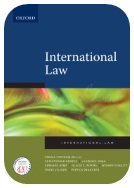
Description:International Law offers a rigorous yet accessible introduction to public international law for students. Presenting a clearly structured conceptual framework, the text is designed to support understanding by providing a concise, coherent perspective of international law principles and systems at domestic, regional and international levels.by constitutional and customary law, and land and resource reform.
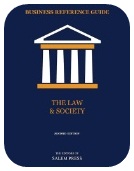
Description:The Business Reference Guide series is designed to provide a solid foundation for the research of various business topics.
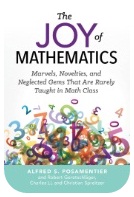
The Joy of Mathematics : Marvels, Novelties, and Neglected Gems That Are Rarely Taught in Math Class
Description:Wouldn’t it be great if all school teachers (from kindergarten through high school) would share the joy of mathematics with their students, rather than focus only on the prescribed curriculum that will subsequently be tested? This book reveals some of the wonders of mathematics that are often missing from classrooms. Here’s your chance to catch up with the math gems you may have missed. Using jargon-free language and many illustrations, the authors–all veteran math educators–explore five areas–arithmetic, algebra, geometry, probability, and the ways in which mathematics can reinforce common sense. Among other things, you’ll learn’the rule of 72,’which enables you to quickly determine how long it will take your bank account to double its value at a specific interest rate. Other handy techniques include an automatic algorithm for multiplying numbers mentally and a clever application that will allow you to convert from miles to kilometers (or the reverse) mentally. A delightful presentation of geometric novelties reveals relationships that could have made your study of geometry more fun and enlightening. In the area of probability there is a host of interesting examples: from the famous Monty-Hall problem to the counterintuitive probability of two people having the same birthday in a crowded room. Finally, the authors demonstrate how math will make you a better thinker by improving your organizing abilities and providing useful and surprising solutions to common mathematics problems. You’ll come away with an appreciation for math you never thought possible and a true appreciation for this’queen of the sciences.’
 The Best Writing on Mathematics 2016
The Best Writing on Mathematics 2016
Description:The year’s finest mathematics writing from around the worldThis annual anthology brings together the year’s finest mathematics writing from around the world. Featuring promising new voices alongside some of the foremost names in the field, The Best Writing on Mathematics 2016 makes available to a wide audience many articles not easily found anywhere else—and you don’t need to be a mathematician to enjoy them. These writings offer surprising insights into the nature, meaning, and practice of mathematics today. They delve into the history, philosophy, teaching, and everyday occurrences of math, and take readers behind the scenes of today’s hottest mathematical debates.Here Burkard Polster shows how to invent your own variants of the Spot It! card game, Steven Strogatz presents young Albert Einstein’s proof of the Pythagorean Theorem, Joseph Dauben and Marjorie Senechal find a treasure trove of math in New York’s Metropolitan Museum of Art, and Andrew Gelman explains why much scientific research based on statistical testing is spurious. In other essays, Brian Greene discusses the evolving assumptions of the physicists who developed the mathematical underpinnings of string theory, Jorge Almeida examines the misperceptions of people who attempt to predict lottery results, and Ian Stewart offers advice to authors who aspire to write successful math books for general readers. And there’s much, much more.In addition to presenting the year’s most memorable writings on mathematics, this must-have anthology includes a bibliography of other notable writings and an introduction by the editor, Mircea Pitici. This book belongs on the shelf of anyone interested in where math has taken us—and where it is headed.
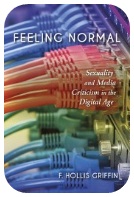
Feeling Normal : Sexuality and Media Criticism in the Digital Age
Description:The explosion of cable networks, cinema distributors, and mobile media companies explicitly designed for sexual minorities in the contemporary moment has made media culture a major factor in what it feels like to be a queer person. F. Hollis Griffin demonstrates how cities offer a way of thinking about that phenomenon. By examining urban centers in tandem with advertiser-supported newspapers, New Queer Cinema and B-movies, queer-targeted television, and mobile apps, Griffin illustrates how new forms of LGBT media are less’new’than we often believe. He connects cities and LGBT media through the experiences they can make available to people, which Griffin articulates as feelings, emotions, and affects. He illuminates how the limitations of these experiences—while not universally accessible, nor necessarily empowering—are often the very reasons why people find them compelling and desirable.
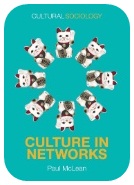
Description:Today, interest in networks is growing by leaps and bounds, in both scientific discourse and popular culture. Networks are thought to be everywhere – from the architecture of our brains to global transportation systems. And networks are especially ubiquitous in the social world: they provide us with social support, account for the emergence of new trends and markets, and foster social protest, among other functions. Besides, who among us is not familiar with Facebook, Twitter, or, for that matter, World of Warcraft, among the myriad emerging forms of network-based virtual social interaction? It is common to think of networks simply in structural terms – the architecture of connections among objects, or the circuitry of a system. But social networks in particular are thoroughly interwoven with cultural things, in the form of tastes, norms, cultural products, styles of communication, and much more. What exactly flows through the circuitry of social networks? How are people’s identities and cultural practices shaped by network structures? And, conversely, how do people’s identities, their beliefs about the social world, and the kinds of messages they send affect the network structures they create? This book is designed to help readers think about how and when culture and social networks systematically penetrate one another, helping to shape each other in significant ways.

Everyday Mathematics for Parents : What You Need to Know to Help Your Child Succeed
Description:The Everyday Mathematics (EM) program was developed by the University of Chicago School Mathematics Project (UCSMP) and is now used in more than 185,000 classrooms by almost three million students. Its research-based learning delivers the kinds of results that all school districts aspire to. Yet despite that tremendous success, EMoften leaves parents perplexed. Learning is accomplished not through rote memorization, but by actually engaging in real-life math tasks. The curriculum isn’t linear, but rather spirals back and forth, weaving concepts in and out of lessons that build overall understanding and long-term retention. It’s no wonder that many parents have difficulty navigating this innovative mathematical and pedagogic terrain. Now help is here. Inspired by UCSMP’s firsthand experiences with parents and teachers, Everyday Mathematics for Parents will equip parents with an understanding of EM and enable them to help their children with homework—the heart of the great parental adventure of ensuring that children become mathematically proficient. Featuring accessible explanations of the research-based philosophy and design of the program, and insights into the strengths of EM, this little book provides the big-picture information that parents need. Clear descriptions of how and why this approach is different are paired with illustrative tables that underscore the unique attributes of EM. Detailed guidance for assisting students with homework includes explanations of the key EM concepts that underlie each assignment. Resources for helping students practice math more at home also provide an understanding of the long-term utility of EM. Easy to use, yet jam-packed with knowledge and helpful tips, Everyday Mathematics for Parents will become a pocket mentor to parents and teachers new to EM who are ready to step up and help children succeed. With this book in hand, you’ll finally understand that while this may not be the way that you learned math, it’s actually much better.
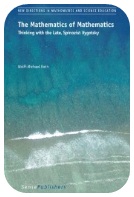
The Mathematics of Mathematics : Thinking with the Late, Spinozist Vygotsky
Description:This book takes up where L. S. Vygotsky has left off during the last few months of his life, when he renounced much of what he had done before. A month before Vygotsky died, he wrote in his notebook that he felt like Moses who had seen the promised land but was never allowed to set foot on it. The vision Vygotsky laid out during his final days had been influenced by his readings of the Dutch philosopher Baruch Spinoza and a book by Karl Marx published for the first time a year before Vygotsky died. In the present book, the author lays out a view of mathematics based on a monist view of knowing, learning, and development. Just as the essence of what is specifically human, the mathematics of mathematics exists in the ensemble of societal relations. For the individual, this means that mathematical thinking and reasoning was a society-typical relation with another person first, often the teacher. Using data from a variety of situations, including school students as well as scientists, the book develops some fundamental concepts and categories for mathematics education research, including the thinking body, sociogenesis, the intra-intersubjective field, pereživanie (experience), obučenie (teaching | learning), and drama.
Description:Questo testo si rivolge a studenti che approcciano per la prima volta il tema del marketing e delle relazioni tra attori socio-economici. L’impostazione dell’opera è originale poiché comprende i tradizionali fondamenti di marketing, ma include altresì spunti orientati alle nuove logiche di relazione tra attori frutto di recenti ricerche sul tema, supportate dalle nuove tecnologie. In queste prospettive il volume presenta una nuova concettualizzazione degli scambi di servizio alla base di qualsiasi processo di co-creazione di valore, mostrando quanto il valore e le relazioni siano alla base di un costruttivo dialogo tra soggetti socio-economici. Assecondando spunti derivanti dalla ‘Service Dominant Logic’e dalla ‘Service Science’, infatti, il volume descrive uno scenario in cui gli attori dovrebbero ispirarsi a cultura, approcci filosofici e paradigmi sociali oramai maturi quali il many-to-many marketing, i network e l’Approccio Sistemico Vitale.L’abilità degli attori di ben interpretare questa nuova visione relazionale determina la relativa capacità competitiva creando i presupposti affinché i diversi attori sociali siano parte attiva di proposizioni di valore ap-prezzate nell’ambito di mercati complessi e dinamici, nella ricerca di interazioni positive e di scambi di co-creazione di valore vitali e sostenibili.A ben vedere, pertanto, il presente volume introduce allo studio del Marketing non tanto fornendo elementi pratici utili alla gestione di una funzione aziendale, bensì stimolando l’acquisizione di un approccio culturale e di una filosofia che possano rivelarsi determinanti per individui ed attori socio-economici.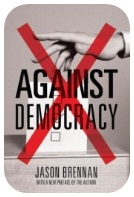
Against Democracy : New Preface
Description:Most people believe democracy is a uniquely just form of government. They believe people have the right to an equal share of political power. And they believe that political participation is good for us—it empowers us, helps us get what we want, and tends to make us smarter, more virtuous, and more caring for one another. These are some of our most cherished ideas about democracy. But Jason Brennan says they are all wrong.In this trenchant book, Brennan argues that democracy should be judged by its results—and the results are not good enough. Just as defendants have a right to a fair trial, citizens have a right to competent government. But democracy is the rule of the ignorant and the irrational, and it all too often falls short. Furthermore, no one has a fundamental right to any share of political power, and exercising political power does most of us little good. On the contrary, a wide range of social science research shows that political participation and democratic deliberation actually tend to make people worse—more irrational, biased, and mean. Given this grim picture, Brennan argues that a new system of government—epistocracy, the rule of the knowledgeable—may be better than democracy, and that it’s time to experiment and find out.A challenging critique of democracy and the first sustained defense of the rule of the knowledgeable, Against Democracy is essential reading for scholars and students of politics across the disciplines. Featuring a new preface that situates the book within the current political climate and discusses other alternatives beyond epistocracy, Against Democracy is a challenging critique of democracy and the first sustained defense of the rule of the knowledgeable.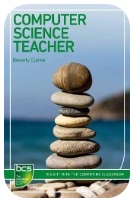 Computer Science Teacher : Insight Into the Computing Classroom
Computer Science Teacher : Insight Into the Computing Classroom
Description:Increased focus on computer science has recently brought about the new national curriculum in computing. This book explores the role of Computer Science Teacher in a secondary school environment. An overview of secondary school computing is covered, along with what the role encompasses, the attributes, knowledge and skills required to be a success and useful standards, tools, methods and techniques you can employ. Case studies and quotes from schools and current teachers are also included.
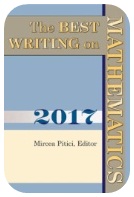
The Best Writing on Mathematics 2017
Description:The year’s finest mathematics writing from around the worldThis annual anthology brings together the year’s finest mathematics writing from around the world. Featuring promising new voices alongside some of the foremost names in the field, The Best Writing on Mathematics 2017 makes available to a wide audience many articles not easily found anywhere else—and you don’t need to be a mathematician to enjoy them. These writings offer surprising insights into the nature, meaning, and practice of mathematics today. They delve into the history, philosophy, teaching, and everyday occurrences of math, and take readers behind the scenes of today’s hottest mathematical debates.Here Evelyn Lamb describes the excitement of searching for incomprehensibly large prime numbers, Jeremy Gray speculates about who would have won math’s highest prize—the Fields Medal—in the nineteenth century, and Philip Davis looks at mathematical results and artifacts from a business and marketing viewpoint. In other essays, Noson Yanofsky explores the inherent limits of knowledge in mathematical thinking, Jo Boaler and Lang Chen reveal why finger-counting enhances children’s receptivity to mathematical ideas, and Carlo Séquin and Raymond Shiau attempt to discover how the Renaissance painter Fra Luca Pacioli managed to convincingly depict his famous rhombicuboctahedron, a twenty-six-sided Archimedean solid. And there’s much, much more.In addition to presenting the year’s most memorable writings on mathematics, this must-have anthology includes a bibliography of other notable writings and an introduction by the editor, Mircea Pitici. This book belongs on the shelf of anyone interested in where math has taken us—and where it is headed.
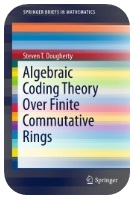
Algebraic Coding Theory Over Finite Commutative Rings
Description:This book provides a self-contained introduction to algebraic coding theory over finite Frobenius rings. It is the first to offer a comprehensive account on the subject.Coding theory has its origins in the engineering problem of effective electronic communication where the alphabet is generally the binary field. Since its inception, it has grown as a branch of mathematics, and has since been expanded to consider any finite field, and later also Frobenius rings, as its alphabet. This book presents a broad view of the subject as a branch of pure mathematics and relates major results to other fields, including combinatorics, number theory and ring theory.Suitable for graduate students, the book will be of interest to anyone working in the field of coding theory, as well as algebraists and number theorists looking to apply coding theory to their own work.
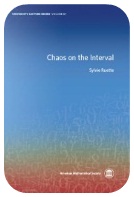
Description:The aim of this book is to survey the relations between the various kinds of chaos and related notions for continuous interval maps from a topological point of view. The papers on this topic are numerous and widely scattered in the literature; some of them are little known, difficult to find, or originally published in Russian, Ukrainian, or Chinese. Dynamical systems given by the iteration of a continuous map on an interval have been broadly studied because they are simple but nevertheless exhibit complex behaviors. They also allow numerical simulations, which enabled the discovery of some chaotic phenomena. Moreover, the “most interesting” part of some higher-dimensional systems can be of lower dimension, which allows, in some cases, boiling it down to systems in dimension one. Some of the more recent developments such as distributional chaos, the relation between entropy and Li-Yorke chaos, sequence entropy, and maps with infinitely many branches are presented in book form for the first time. The author gives complete proofs and addresses both graduate students and researchers.

Mindset Mathematics : Visualizing and Investigating Big Ideas, Grade 4
Description:Engage students in mathematics using growth mindset techniques The most challenging parts of teaching mathematics are engaging students and helping them understand the connections between mathematics concepts. In this volume, you’ll find a collection of low floor, high ceiling tasks that will help you do just that, by looking at the big ideas at the first-grade level through visualization, play, and investigation. During their work with tens of thousands of teachers, authors Jo Boaler, Jen Munson, and Cathy Williams heard the same message—that they want to incorporate more brain science into their math instruction, but they need guidance in the techniques that work best to get across the concepts they needed to teach. So the authors designed Mindset Mathematics around the principle of active student engagement, with tasks that reflect the latest brain science on learning. Open, creative, and visual math tasks have been shown to improve student test scores, and more importantly change their relationship with mathematics and start believing in their own potential. The tasks in Mindset Mathematics reflect the lessons from brain science that: There is no such thing as a math person – anyone can learn mathematics to high levels. Mistakes, struggle and challenge are the most important times for brain growth. Speed is unimportant in mathematics. Mathematics is a visual and beautiful subject, and our brains want to think visually about mathematics. With engaging questions, open-ended tasks, and four-color visuals that will help kids get excited about mathematics, Mindset Mathematics is organized around nine big ideas which emphasize the connections within the Common Core State Standards (CCSS) and can be used with any current curriculum.
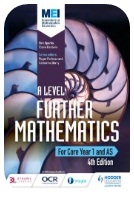
MEI : A Level Further Mathematics for Core Year 1 and AS
Description:An OCR endorsed textbookHelp students to develop their knowledge and apply their reasoning to mathematical problems with textbooks that draw on the well-known MEI (Mathematics in Education and Industry) series, updated and tailored to the 2017 OCR (MEI) specification and developed by subject experts and MEI.- Ensure targeted development of reasoning and problem-solving skills with plenty of practice questions and structured exercises that build mathematical skills and techniques.- Build connections between topics, using real-world contexts to help develop mathematical modelling skills, thus providing a fuller and more coherent understanding of mathematical concepts.- Address the new statistics requirements with five dedicated statistics chapters and questions around the use of large data sets. – Help students to overcome misconceptions and develop insight into problem solving with annotated worked examples.- Develop understanding and measure progress with graduated exercises that support students at every stage of their learning.- Provide clear paths of progression that combine pure and applied maths into a coherent whole.
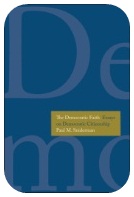
The Democratic Faith : Essays on Democratic Citizenship
Description:Can the citizens of a democracy be trusted to run it properly? Modern political science has concentrated on cataloguing voters’failings—their lack of knowledge, tolerance, or consistency in political thinking. While it would be a mistake to think this portrait of citizens is simply wrong, it is a deeper mistake to accept it as a satisfactory likeness. In this book, Paul Sniderman demonstrates that a concentration on the pathologies of citizens’political thinking has obscured the intense clash of opposing belief systems in the electorate. He shows how a concentration on racism has distorted understanding of the politics of race by keeping out of sight those who think well of black Americans. And he exposes the fallacy of spotlighting the dangers of mass politics while ignoring those of elite politics.
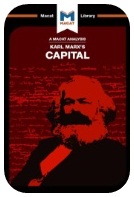
Description:Marx’s Capital is without question one of the most influential books to be published in the course of the past two centuries. Controversial in its politics, and arriving at conclusions that are passionately debated to this day, it is nonetheless a fine example of the creative combination of a philosophical method (the dialectic) with historical and economic information to produce a new interpretation of history. Marx’s belief that he had arrived at a scientific way of describing the present and predicting the future may not be shared by many of his modern interpreters. But his ability to connect things together in new ways is not in doubt – and nor is the influence of the new hypotheses that he generated as a result of so much careful analysis.
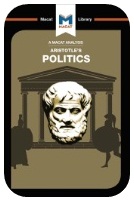
Description:Aristotle remains one of the most celebrated thinkers of all time in large part thanks to his incisive critical thinking skills. In Politics, which can be considered one of the foundational books of the western political tradition, the focus is on problem-solving, and particularly on the generation and evaluation of alternative possibilities. Aristotle’s aim, in Politics, is to determine how best to organize a society. He looks in turn at several different type of organization – kingship, oligarchy and the polity, or rule in the hands of many – and evaluates the arguments for each in turn. But he takes the exercise further than his predecessors had done. Having concluded that rule by the aristocracy would be preferable, since it would mean rule by citizens capable of taking decisions on behalf of the society as a whole, Aristotle subjects his solution to a further checking process, asking productive questions in order to make a sound decision between alternatives. Politics was ground-breaking in its approach. Unlike previous thinkers, Aristotle based all his ideas on a practical assessment of how they would play out in the real world. Ultimately, Aristotle argues, the problem of self-interest means that the adoption of a mixed constitution – one based on carefully considered laws which aims at a balance of power between the people and the elite – is most likely to bring eudaemonia (happiness). It’s a conclusion firmly based on careful evaluation (not least the process of judging the adequacy of arguments) and the product of outstanding problem-solving skills.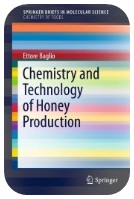
Chemistry and Technology of Honey Production
Description:This Brief explains and discusses honey and its production from a chemical perspective. It outlines why honey is a special and unique food, being produced by bees from the nectar of plants or from secretions of living parts of plants. Although glucose and fructose are the main constituents of honey, its overall composition is far from being simple or uniform: other substances such as organic acids, enzymes, or minerals are found in varying amounts. In this Brief, the author addresses the factors that influence the composition of the honey as well as the consequences that the composition has on properties such as color, crystallization, density, viscosity, or the refractive index. This Brief also introduces some of the most commonly used quality parameters for the determination of ageing and/or overheating: 5-hydroxymethylfurfural (HMF) and diastase. Other recently proposed constituents for quality parameters are also mentioned, e.g. 1,2 dicarbonyl compounds (3 deoxyglucosone, methylglyoxal, glyoxal) and furosine, also named 2-furoylmethyl lysine.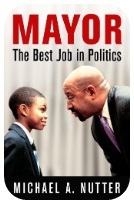 Mayor : The Best Job in Politics
Mayor : The Best Job in Politics
Description:In 2007, after serving almost fifteen years on the Philadelphia City Council, Michael A. Nutter became the ninety-eighth mayor of his hometown of Philadelphia. From the time he was sworn in until he left office in 2016, there were triumphs and challenges, from the mundane to the unexpected, from snow removal, trash collection, and drinkable water, to the Phillies’World Series win, Hurricane Irene, Occupy Philadelphia, and the Papal visit. By the end of Nutter’s tenure, homicides were at an almost fifty-year low, high-school graduation and college-degree attainment rates increased significantly, and Philadelphia’s population had grown every year. Nutter also recruited businesses to open in Philadelphia, motivating them through tax reforms, improved services, and international trade missions.Mayor begins with Nutter’s early days in politics and ultimate run for mayor, when he formed a coalition from a base of support that set the stage for a successful term. Transitioning from campaigning to governing, Nutter shares his vast store of examples to depict the skills that enable a city politician to lead effectively and illustrates how problem-solving pragmatism is essential for success. With a proven track record of making things work, Nutter asserts that mayoring promises more satisfaction and more potential achievements—for not only the mayor but also the governed—than our fractious political system would have us believe.Detailing the important tasks that mayoral administrations do, Nutter tells the compelling story of a dedicated staff working together to affect positively the lives of the people of Philadelphia every day. His anecdotes, advice, and insights will excite and interest anyone with a desire to understand municipal government.
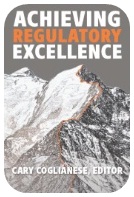
Achieving Regulatory Excellence
Description:Whether striving to protect citizens from financial risks, climate change, inadequate health care, or the uncertainties of the emerging sharing” economy, regulators must routinely make difficult judgment calls in an effort to meet the conflicting demands that society places on them. Operating within a political climate of competing demands, regulators need a lodestar to help them define and evaluate success. Achieving Regulatory Excellence provides that direction by offering new insights from law, public administration, political science, sociology, and policy sciences on what regulators need to do to improve their performance. Achieving Regulatory Excellence offers guidance from leading international experts about how regulators can set appropriate priorities and make sound, evidence-based decisions through processes that are transparent and participatory. With increasing demands for smarter but leaner government, the need for sound regulatory capacityfor regulatory excellencehas never been stronger. In addition to chapters by editor Cary Coglianese, and a foreword by Jim Ellis, president and chief executive officer of the Alberta Energy Regulator, contributors include Robert Baldwin (London School of Economics and Political Science), John Braithwaite (Australian National University), Angus Corbett (University of Pennsylvania), Daniel Esty (Yale University), Adam Finkel (University of Pennsylvania and University of Michigan), Ted Gayer (Brookings Institution), John Graham (Indiana University), Neil Gunningham (Australian National University), Kathryn Harrison (University of British Columbia), Bridget Hutter (London School of Economics and Political Science), Howard Kunreuther (Wharton School at the University of Pennsylvania), David Levi-Faur (Hebrew University of Jerusalem), Shelley H. Metzenbaum (Volcker Alliance), Donald P. Moynihan (University of WisconsinMadison), Paul R. Noe (American Forest and Paper Association), Gaurav Vasisht (Volcker Alliance), David Vogel (University of CaliforniaBerkeley), and Wendy Wagner (University of Texas School of Law).
